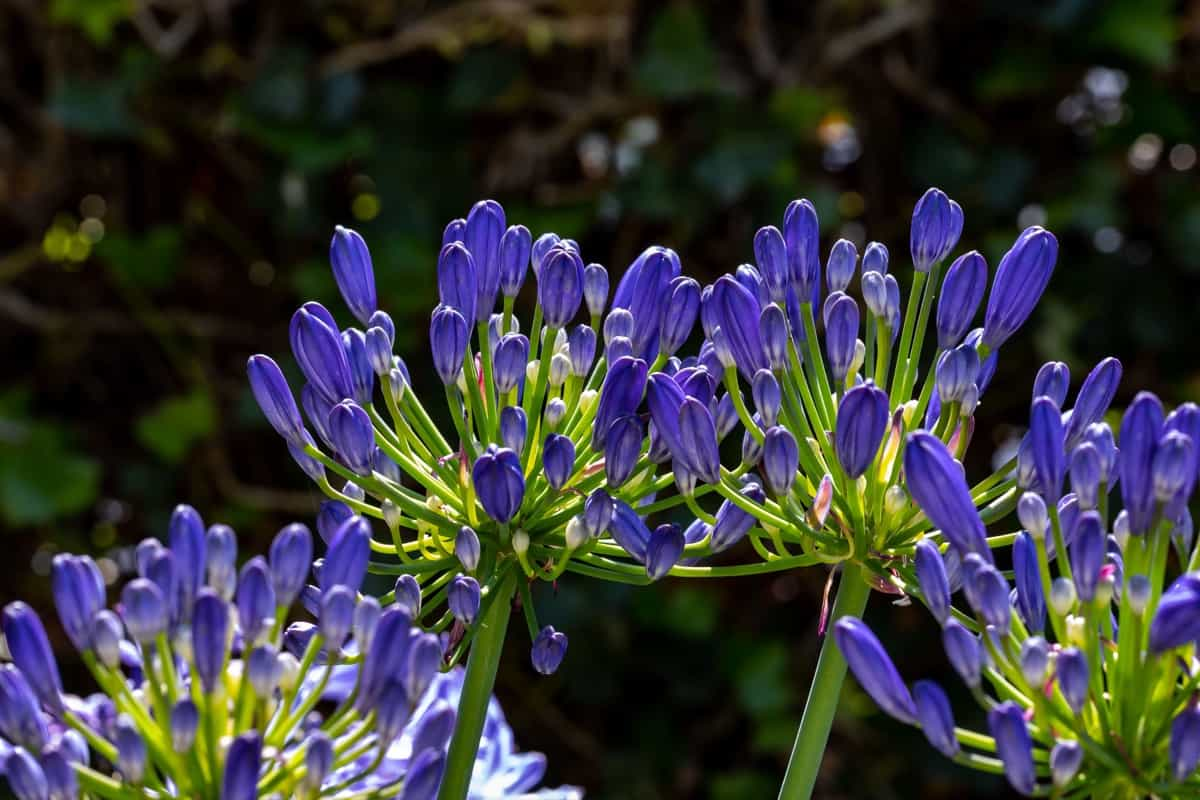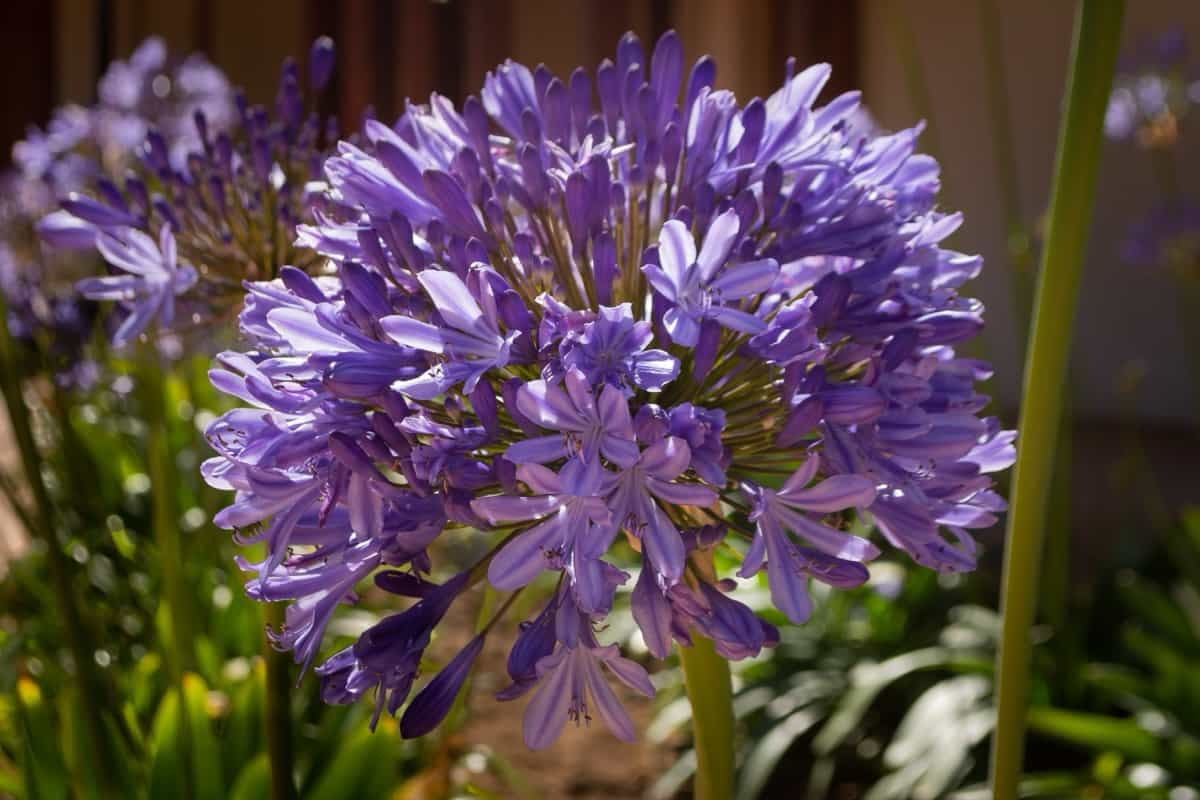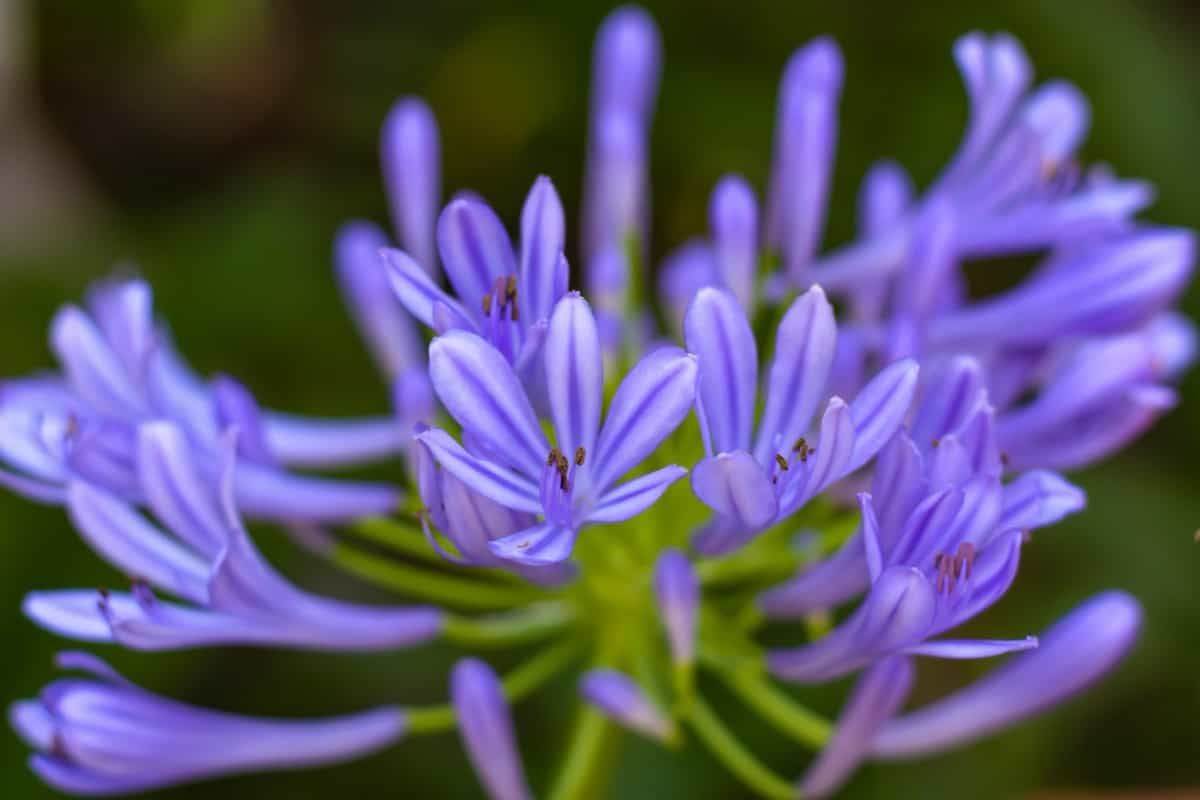A healthy Agapanthus plant should reward you with beautiful blooms. By understanding the reasons Agapanthus won’t bloom and implementing the appropriate remedies and treatments, you can encourage it to bloom again.

10 Reasons Why Your Agapanthus is Not Flowering
Insufficient Sunlight
One possible reason could be insufficient sunlight. Agapanthus thrives in full sun or partial shade, so if they’re not getting enough light, it could hinder their flowering capabilities. Check the location of your agapanthus. Sunlight requirements for Agapanthus is at least 6 hours of sunlight daily to bloom successfully. To improve Agapanthus bloom, try moving your Agapanthus to a sunnier spot in your garden where they can soak up those rays. Remember, proper sunlight exposure is crucial for these beautiful flowers to reach their full blooming potential.
Overcrowding
When plants are crammed together too closely, they have to compete for resources like nutrients and sunlight. In an overcrowded environment, the roots of the Agapanthus may struggle to access enough water and essential minerals from the soil. This can directly impact their ability to bloom vibrantly. Additionally, crowded plants may also block each other’s access to sunlight, which is crucial for healthy flower development. When it comes to Agapanthus overcrowding solutions, consider transplanting or dividing your Agapanthus to give them more space to thrive.
Nutrient Imbalance
Agapanthus plants require a balanced mix of essential nutrients to thrive and produce stunning blooms. If there’s an excess or deficiency of certain nutrients, it can hinder flowering. To address this issue, consider conducting a soil test to determine the nutrient levels present. Based on the results, you can then tailor your fertilization approach accordingly.
When it comes to fertilizers for blooming agapanthus, it’s important to use fertilizer specifically formulated for flowering plants like agapanthus. Look for products with balanced NPK ratios to ensure your plant receives the right nutrients in the right proportions.
Water Stress
These beautiful flowers require consistent moisture to thrive and produce blooms. Underwatering can lead to wilting leaves and stunted growth. On the other hand, overwatering can cause root rot and prevent flower production. Finding the right balance is key. When it comes to Watering tips for agapanthus, ensure your Agapanthus receives an adequate amount of water.
In case you missed it: 10 Reasons Why Your Flower Plant is Not Blooming: Remedies and Treatment

Check the soil to assess moisture levels – it should be moist but not waterlogged. Consider using drip irrigation systems to provide a slow, steady supply of water to the roots. This method helps avoid wetting the foliage, which can promote diseases.
Poor Soil Conditions
Having poor soil conditions can be a major reason why your Agapanthus is not flowering as expected. If your soil lacks essential nutrients or has become compacted over time, it can hinder the growth and blooming of your agapanthus. To address this issue, adding organic matter can help improve soil structure and provide a better environment for your Agapanthus to flourish. When it comes to soil conditions for agapanthus, make sure that the soil has good drainage to prevent waterlogging.
Lack of a Cold Period
Agapanthus plants often require a period of cooler temperatures to trigger flowering. Without a Cold period for agapanthus, the plant may not produce flowers as expected. During colder months, some Agapanthus varieties need a break from warm conditions to prepare for blooming in the following season. This cold period helps stimulate flower production and ensures healthy growth.
If your plant is kept consistently warm without experiencing cooler temperatures, it might struggle to initiate its flowering cycle effectively. To encourage blooming in your agapanthus, consider providing it with some exposure to lower temperatures when possible. This natural process can help reset the plant’s internal clock and promote the development of beautiful blooms when the growing season arrives again.
Age of the Plant
As your Agapanthus plant ages, its ability to produce flowers may decrease. It’s a natural process for plants to slow down flower production as they get older. The energy that was once used for flowering may now be directed towards survival and growth instead. Younger plants are often more vigorous and prone to producing an abundance of beautiful blooms.
In case you missed it: Natural Fertilizer Recipes for Flowers: Discover from Banana Peel to Epsom Salt

As your Agapanthus matures, it might take longer intervals between flowering cycles or produce fewer flowers overall. This doesn’t mean the plant is unhealthy; it’s just a normal part of its life cycle. To Maximizing Agapanthus blooms, ensure it is receiving adequate sunlight, water, nutrients, and proper care.
Pruning at the Wrong Time
Pruning at the wrong time can hinder your Agapanthus from blooming to its full potential. It’s essential to understand the plant’s growth cycle before grabbing those pruning shears. During active growth periods, like spring and summer, avoid heavy pruning as this can remove potential flower buds. Instead, focus on deadheading spent blooms to encourage new growth.
Late winter or early spring is typically the best time for a more substantial prune to promote healthy flowering later in the season. When it comes to pruning Agapanthus for flowers, cutting back old foliage and stems allows for fresh growth to emerge unimpeded. Overzealous pruning in fall or late summer may disrupt the plant’s ability to store nutrients for winter and regrowth in the next season.
Disease or Pest Issues
Dealing with pesky diseases and pests can be a real headache for your Agapanthus plants. These intruders can wreak havoc on your beautiful flowers, causing them to wilt or not bloom at all. Keep an eye out for common issues like powdery mildew. Another common pest is aphids, tiny insects that cause yellowing leaves and stunted growth. When it comes to Agapanthus pest control, consider using natural remedies like neem oil to keep pests at bay without harming beneficial insects. Regularly check plants for any signs of disease or infestation so you can take action promptly.
Incorrect Pot Size
When it comes to Pot size for agapanthus, the size of the pot matters more than you might think. If your Agapanthus is not flowering, one possible reason could be that it’s in an incorrect pot size. Agapanthus plants prefer to have some space for their roots to grow and expand. If the pot is too small, it can restrict root growth and ultimately impact flower production. To encourage Agapanthus flowers, consider repotting your Agapanthus into a larger container that allows room for the roots to spread out comfortably.
This will help promote healthier growth and potentially encourage blooming in the future. Remember that proper drainage is also essential when selecting a new pot for your agapanthus. To minimize Agapanthus flowering problems, make sure there are adequate drainage holes to prevent waterlogging, which can further hinder flower development.
In case you missed it: 12 Best Water Management Strategies for Flower Gardens

Conclusion
There are various reasons why your Agapanthus is not flowering as expected. By addressing issues such as insufficient sunlight, overcrowding, nutrient imbalance, water stress, poor soil conditions, lack of a cold period, the age of the plant, pruning at the wrong time, disease or pest issues, and incorrect pot size, you can help your Agapanthus thrive and bloom beautifully. With this Agapanthus care guide, you can enjoy a flourishing garden filled with vibrant Agapanthus blooms.
- Flower Garden Designs and Layouts for Beginners
- Planting and Spacing Techniques in Papaya: A Beginner’s Guide
- Growing Gold: Essential Techniques for Planting Pineapples
- How to Make Kalanchoe Plant Bushy: Home Remedies and Solutions
- 11 Reasons Why Your Gardenia is Not Blooming: Home Remedies and Solutions
- Eco Elegance: The Guide to Designing a Drought-Tolerant Landscape
- Gardening on a Slope: Strategies for Hillside Landscaping
- Nourish and Flourish: Top Organic Mulches for Thriving House Plants
- Everything You Want to Know about Indian Mogra Flower: Discover Uses and Growing